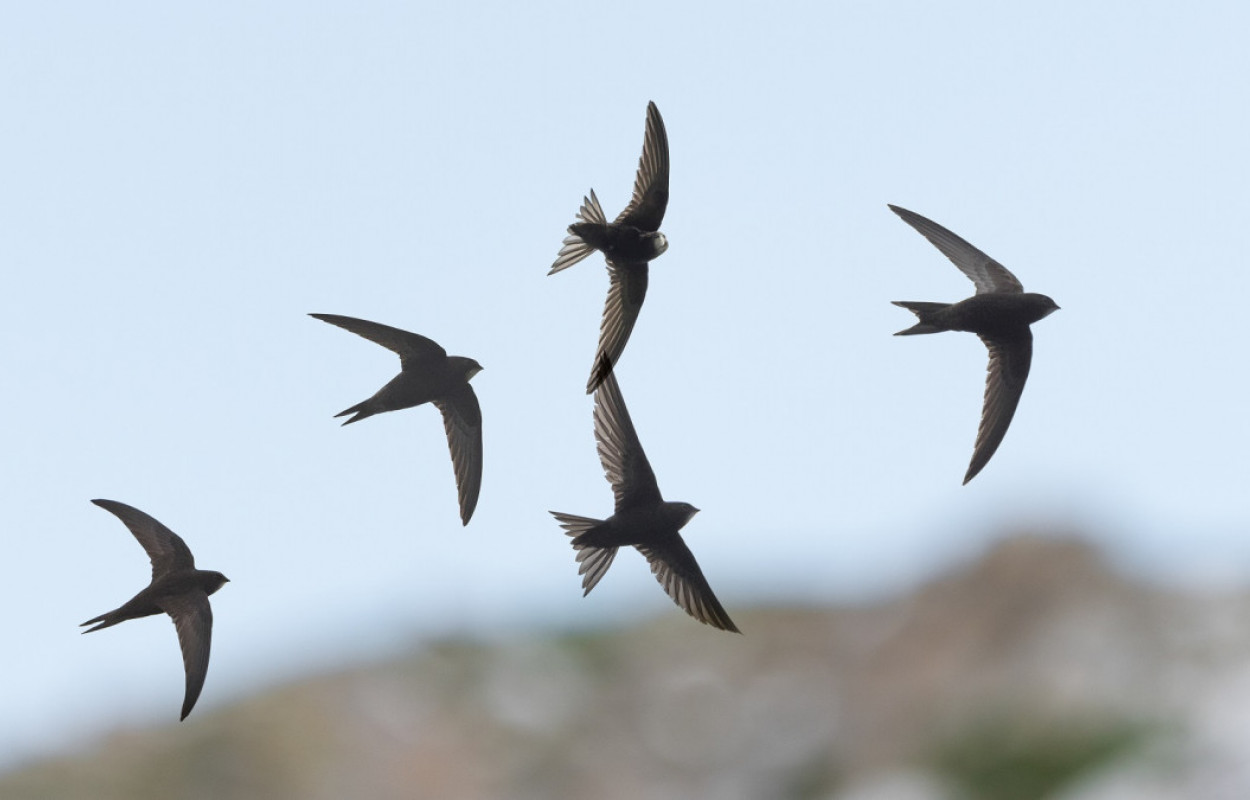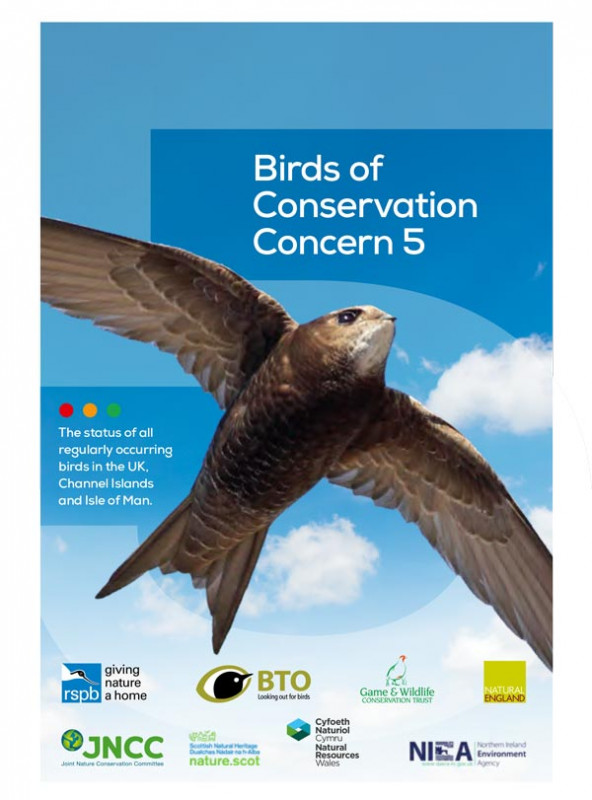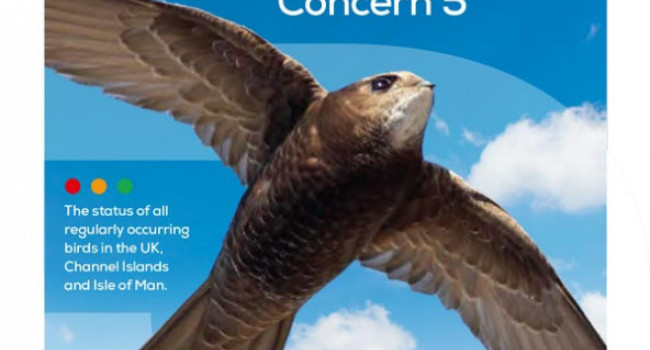The status of our bird populations: the fifth Birds of Conservation Concern in the United Kingdom, Channel Islands and Isle of Man and second IUCN Red List assessment of extinction risk for Great Britain

Author(s): Stanbury, A.J., Eaton, M.A., Aebischer, N.J., Balmer, D., Brown, A.F., Douse, A., Lindley, P., McCulloch, N., Noble, D.G. & Win, I.
Published: December 2021 Pages: 25pp
Journal: British Birds Volume: 114
Read the reportDownload article 649.1 KB application/pdf
Commonly referred to as the UK Red List for birds, this is the fifth review of the status of birds in the UK, Channel Islands and Isle of Man, published in December 2021 as Birds of Conservation Concern 5 (BOCC5). This updates the last assessment in 2015. Using standardised criteria, experts from a range of bird NGOs, including BTO, assessed 245 species with breeding, passage or wintering populations in the UK and assigned each to the Red, Amber or Green Lists of conservation concern.
The same group of experts undertook a parallel exercise to assess the extinction risk of all bird species for Great Britain (the geographical area at which all other taxa are assessed) using the criteria and protocols established globally by the International Union for the Conservation of Nature (IUCN). This resulted in the assessment of 235 regularly occurring species (breeding or wintering or both), the total number assessed differing slightly from BOCC5 due to different rules on the inclusion of scarce breeders and colonisation patterns. The results of this second IUCN assessment (IUCN2) are provided in the same paper as BOCC5.
Increasingly at risk
This update shows that the UK’s bird species are increasingly at risk, with the Red List growing from 67 to 70. Eleven species were Red-listed for the first time, six due to worsening declines in breeding populations (Greenfinch, Swift, House Martin, Ptarmigan, Purple Sandpiper and Montagu’s Harrier), four due to worsening declines in non-breeding wintering populations (Bewick’s Swan, Goldeneye, Smew and Dunlin) and one (Leach’s Storm-petrel) because it is assessed according to IUCN criteria as Globally Vulnerable, and due to evidence of severe declines since 2000 based on new surveys on St Kilda, which holds more than 90% of the UK’s populations. The evidence for the changes in the other species come from the UK’s key monitoring schemes such as BTO/JNCC/RSPB Breeding Bird Survey (BBS) for terrestrial birds, the BTO/RSPB/JNCC Wetland Bird Survey (WeBS) for wintering populations and the Rare Breeding Bird Panel (RBBP) for scarce breeding species such as Purple Sandpiper.
The IUCN assessment resulted in 108 (46%) of regularly occurring species being assessed as threatened with extinction in Great Britain, meaning that their population status was classed as Critically Endangered, Endangered, or Vulnerable, as opposed to Near Threatened or of Least Concern. Of those 108 species, 21 were considered Critically Endangered, 41 Endangered and 46 Vulnerable. There is considerable overlap between the lists but unlike the Red List in BOCC5, IUCN2 highlights the vulnerability of some stable but small and hence vulnerable populations as well as declines in species over much shorter recent time periods, as seen for Chaffinch and Swallow.
Abstract
The fifth review of Birds of Conservation Concern (BoCC5) in the UK, Channel Islands and Isle of Man assessed and assigned 245 species to updated Red, Amber and Green lists of conservation concern and showed a continuing decline in the status of our bird populations. In total, 70 species (29% of those assessed) are now on the Red list, up from 36 species in the first review in 1996. Since the last review, in 2015, Golden Oriole Oriolus oriolus has been lost as a breeding species. Eleven species have been moved to the Red list, while only six species moved from Red to Amber. Newly Red-listed species include Common Swift Apus apus, House Martin Delichon urbicum, Greenfinch Chloris chloris and the globally threatened Leach’s Storm-petrel Oceanodroma leucorhoa. There has been no improvement in the overall status of species associated with farmland and upland, or Afro-Palearctic migrants; indeed, more such species have been Red-listed. Concerns over the status of our wintering wildfowl and wader populations have also increased. As a direct result of targeted conservation action, White-tailed Eagle Haliaeetus albicilla has been moved from Red to Amber.
We also present the separate, and distinct, second IUCN Regional Red List assessment of extinction risk for Great Britain, which shows that 46% of 235 regularly occurring species, and 43% of 285 separate breeding and non-breeding populations, are assessed as being threatened with extinction from Great Britain.
Notes
The authors would like to say a huge thank you to the thousands of voluntary and professional surveyors who have collected data on our avifauna, without whom such assessments would be impossible. Special thanks also to the many colleagues who have helped with access to data and provided advice during the assessment process, including Ian Burfield and Anna Staneva at BirdLife International, Teresa Frost and Dario Massimino at the BTO, Andrew Stevenson at NatureScot, Richard Facey at Natural Resources Wales (NRW), Malcolm Burgess, Fiona Burns, Richard Gregory, Ian Johnstone and Simon Wotton at the RSPB, Dave Baines and Phil Warren at the Game & Wildlife Conservation Trust (GWCT), and David Stroud. This study was funded by RSPB and Natural England as part of the ‘Action for Birds in England’ partnership.








Share this page